Life in the Basement
As a headstrong teenager I moved into the basement to escape the horrifying prospect of sharing a room with my younger brother. That was nearly thirty years ago, but I still spend a great deal of time in the basement, the geologic basement that is. For most people basement is the lowest floor of a building, the floor below ground level, but for geologists basement is the old rock that underlies the soil, sediment, and other bedrock. Geologists have co-opted many common terms for their own use. Just for fun grab a geological dictionary and look up what bedding, erratic, and horse mean to geologists.
The Blue Ridge Mountains in Virginia are underlain by granitic rocks that crystallized over one billion years ago, these old rocks form the basement of the Appalachian region and are overlain by younger volcanic and sedimentary rocks. Over the years my students and I have busied ourselves researching the Blue Ridge basement rocks, but this summer finds us in another part of North America studying the basement.
Ali Snell (’10), Drew Laskowski (’10), and I are bound for the Needle Mountains in southwestern Colorado. The Needles expose basement rocks formed during the growth of the North American continent in the Precambrian. These are the rocks upon which the Rockies are built. The Needles are a precipitous range with many peaks topping out above 4,000 meters (13,120′). Our field sites will be right at and above timberline, here ancient glaciers striped away soil and sediment leaving the bedrock gloriously exposed. We have waited until August to do our fieldwork because, at these elevations, snow lingers well into the summer.
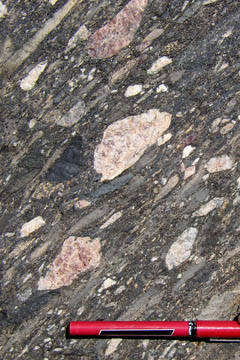
Deformed clasts in conglomerate, the individual clasts were equant before tectonic deformation elongated and sheared them into the shapes we see today.
Aug. 2nd
We pilot our field vehicle, a bare bones red mini-van, from Denver to Vallecito Creek at the base of the range. Arriving at dusk we make camp amongst the Ponderosa pines.
Aug. 3rd
Our first day in the field. Reconnaissance in the Vallecito Creek valley, putting our eyes to the rock and getting to know the terrain. The traverse takes us to 2,900 meters (9,500′) above sea level. Our lungs take notice of the change from Williamsburg.
Aug. 4th
We backpack to a high plateau at 3,690 meters (12,100′) and set our base camp in Ali’s field area. Our first foray with the rocks is inspiring. Ancient tectonic processes squeezed and sheared these rocks. Elongated clasts in the deformed conglomerate please us greatly. The day closes as a blood-orange sun plunges behind a wall of jagged blue mountains.

View from base camp 1 as the sun sets on southwest Colorado.
Aug. 5th-7th
Long days of fieldwork in splendid isolation. We draw our water from a small pond and cook our one-pot meals on a small stove. The sky is ever changing, ranging from an endless deep blue to gray and malevolent. Afternoon thunderstorms rock our world, sending us racing to our tents.
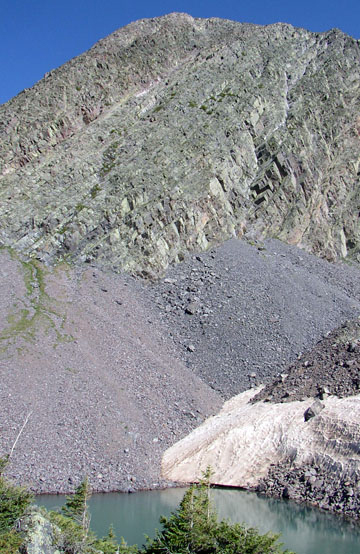
West wall of Snowdon Peak as viewed from base camp 2.
Aug. 8th
We have visited over 180 outcrops, collected more than a dozen samples, and measured rock structure after rock structure- our work here is done. On the hike out we see our first people in five days. On to Durango where showers, spicy food, and margaritas await.
Aug. 9th
Back to the field with freshly loaded packs. Steep ascent from Andrews Lake to our base camp nestled near the base of Snowdon Peak’s impressive west wall- a towering monolith of quartzite. Another glorious sunset in the land of endless mountains.
Aug. 10th
The day is spent mapping the faulted contact between quartzite and the underlying basement complex. Where the contact goes we go- into the plush grassy meadows and around the talus-studded ramparts of Snowdon Peak. It is up and down all day.
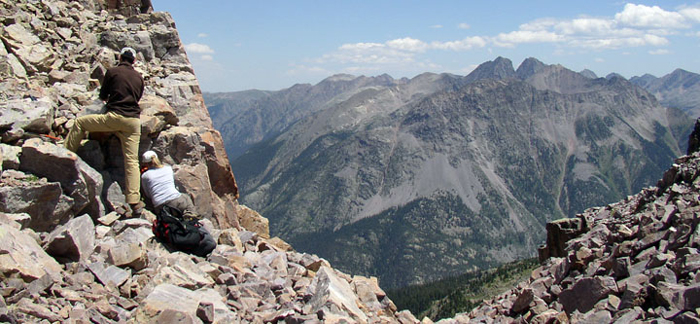
Geologists camouflaged in their earth tones.
Aug. 11th
The west wall of Snowdon Peak blocks the early morning sunshine in camp. Frost coats the ground and we keep our fleeces on. Our time in the basement is drawing to a close. We hike out, load our wilderness wares into the vehicle and traverse the Rockies back to Denver.
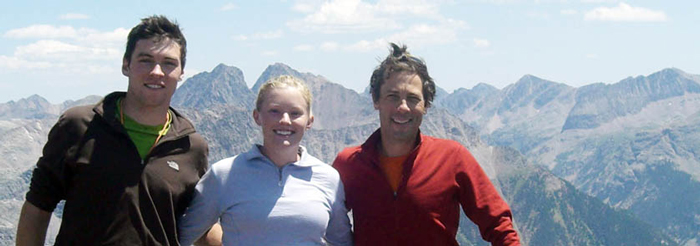
Bad hair day at 4,000 meters.
For Ali and Drew these field experiences are a step forward in their senior research. In Williamsburg, the maps and cross sections will be finalized, samples analyzed, and tectonic models promulgated. Little by little these ancient rocks will reveal their secrets. Basement rocks are fascinating because they offer a glimpse of processes that occurred both long ago and deep within the Earth. For me Etta James, in her classic R&B song In the basement,put it best:
Now tell me where can you party all night long?
Where can you dance to any music you choose?
Do any dance you want to do, caus’ there is no one under you
In the basement, that’s where it’s at!

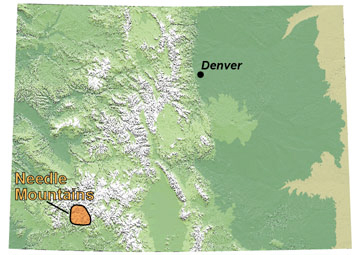
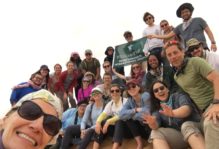

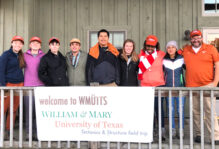
No comments.
Comments are currently closed. Comments are closed on all posts older than one year, and for those in our archive.